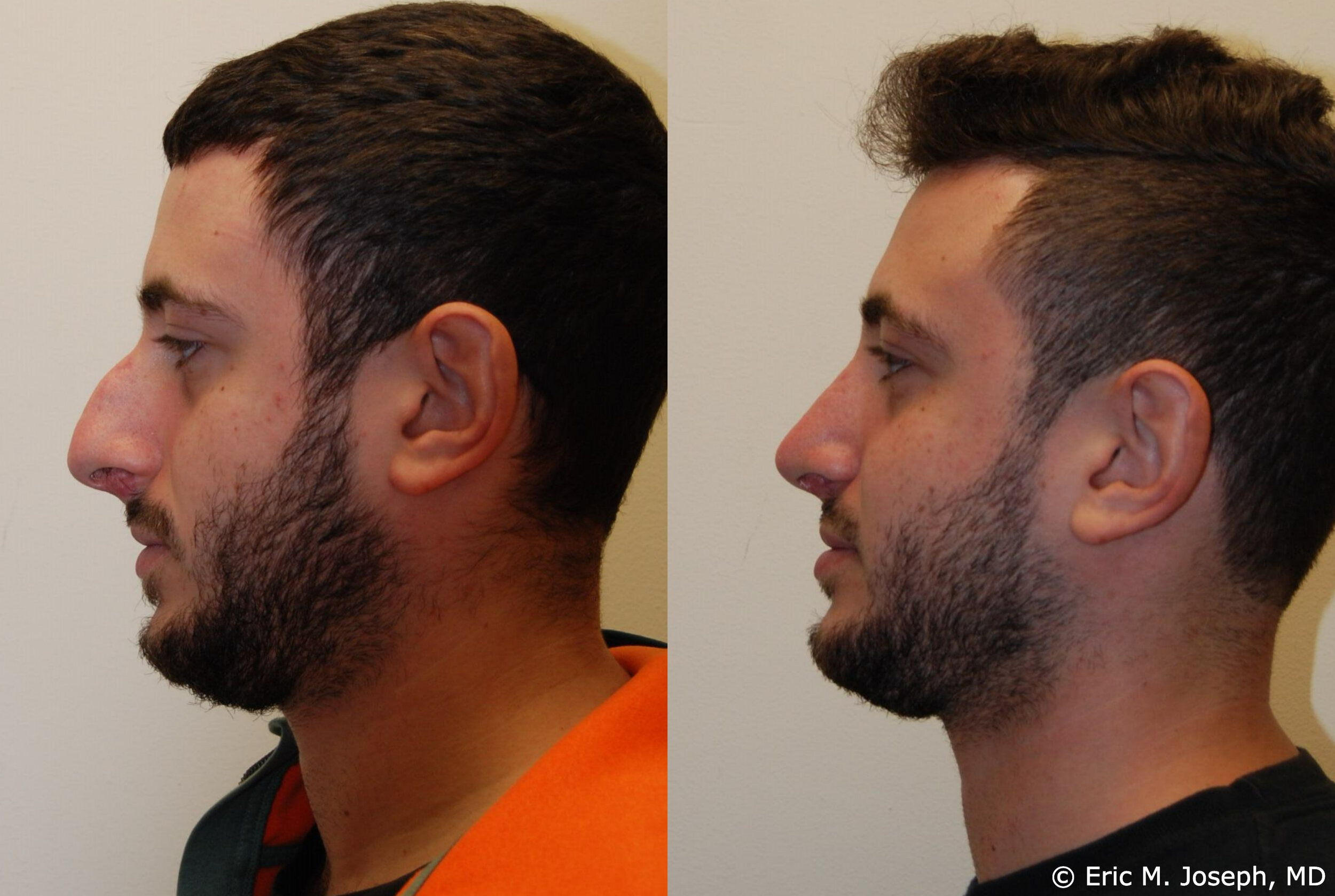
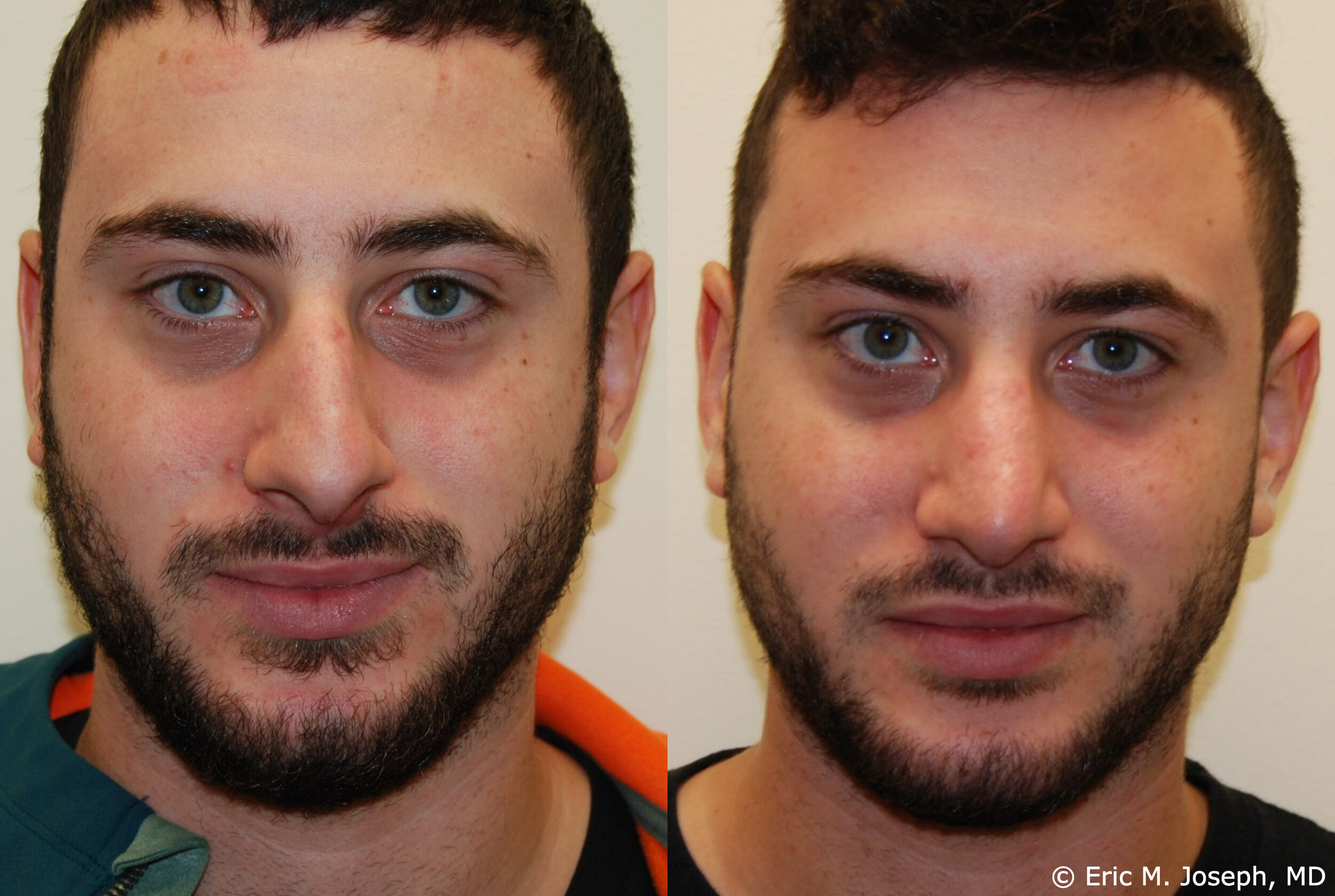
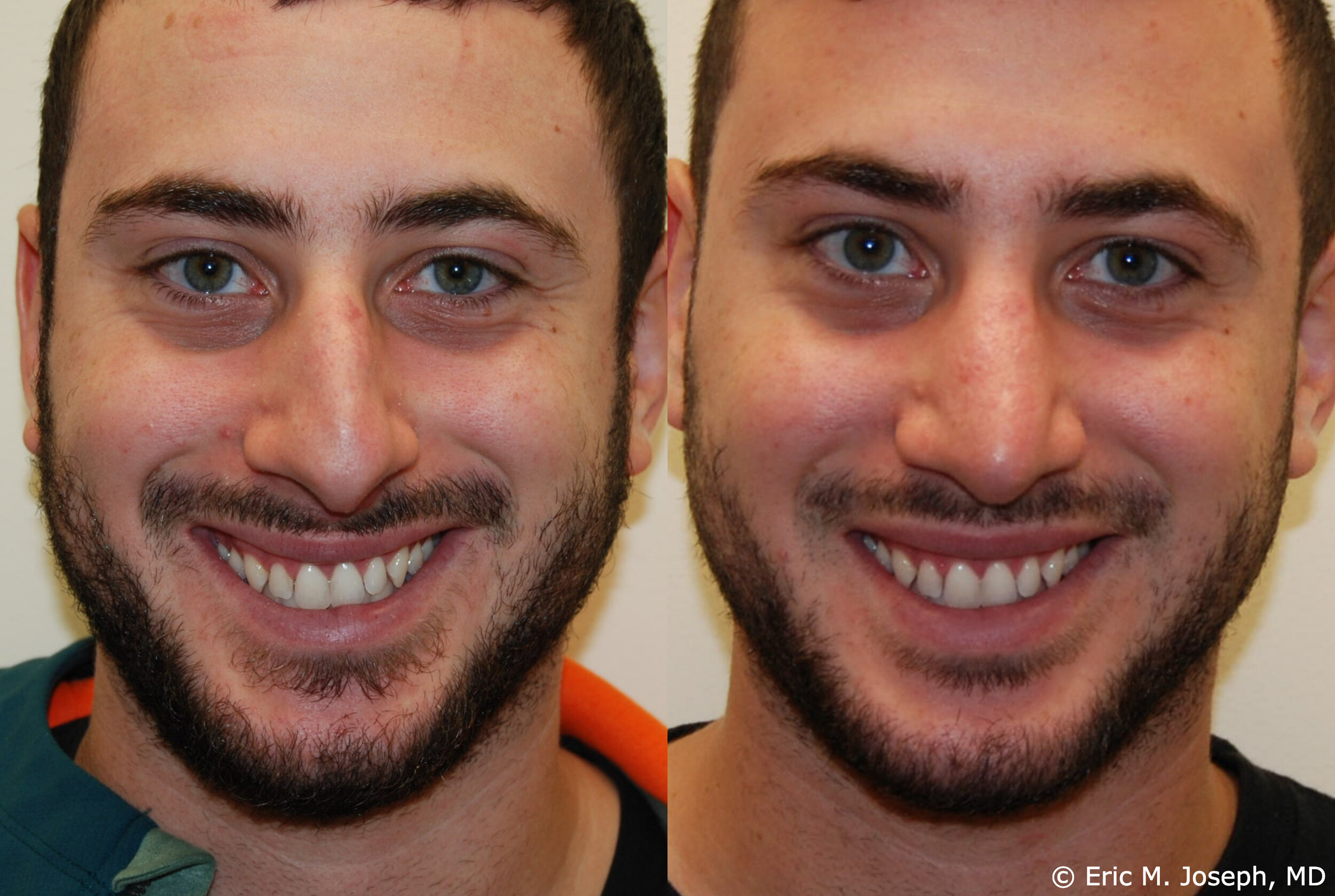
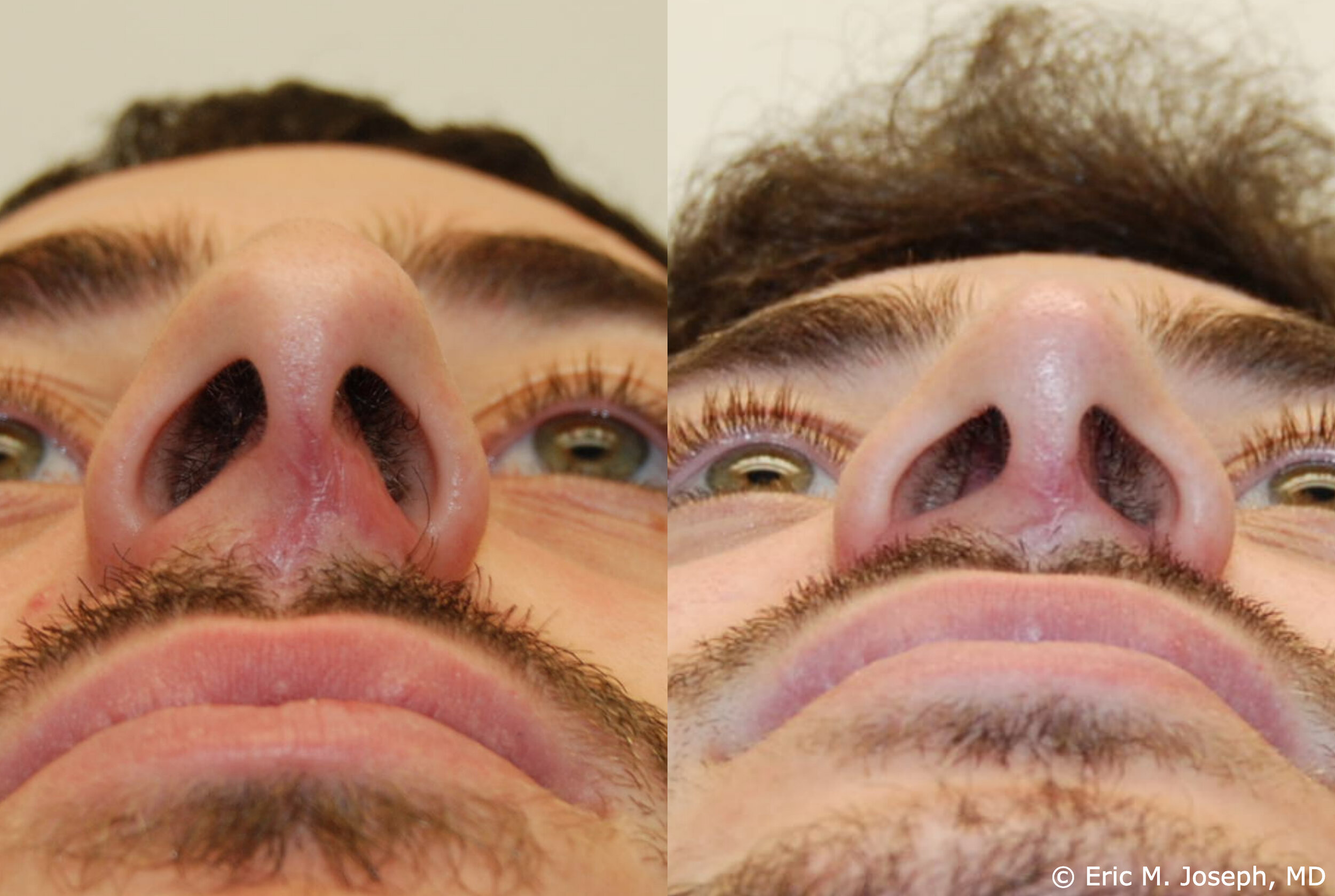
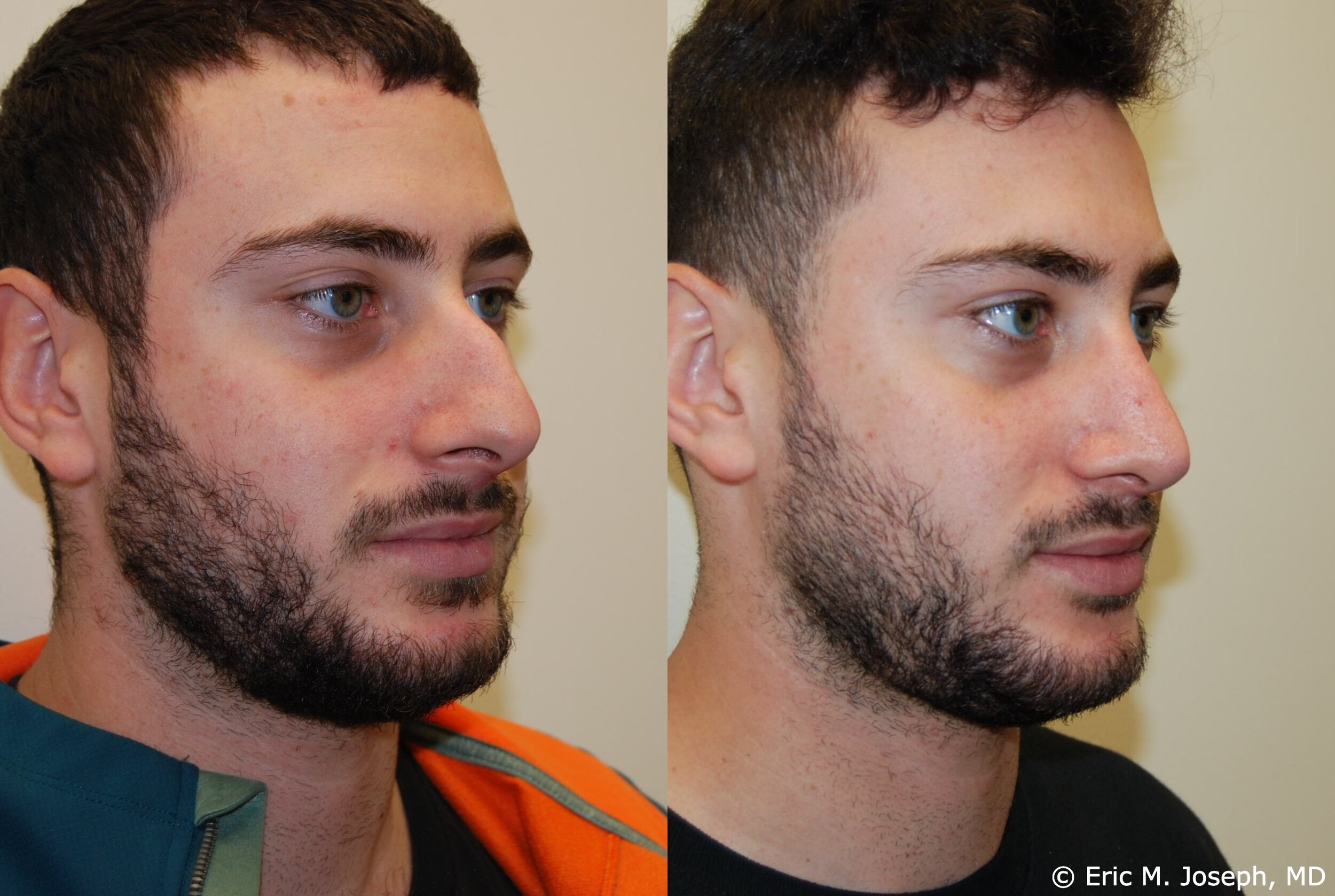
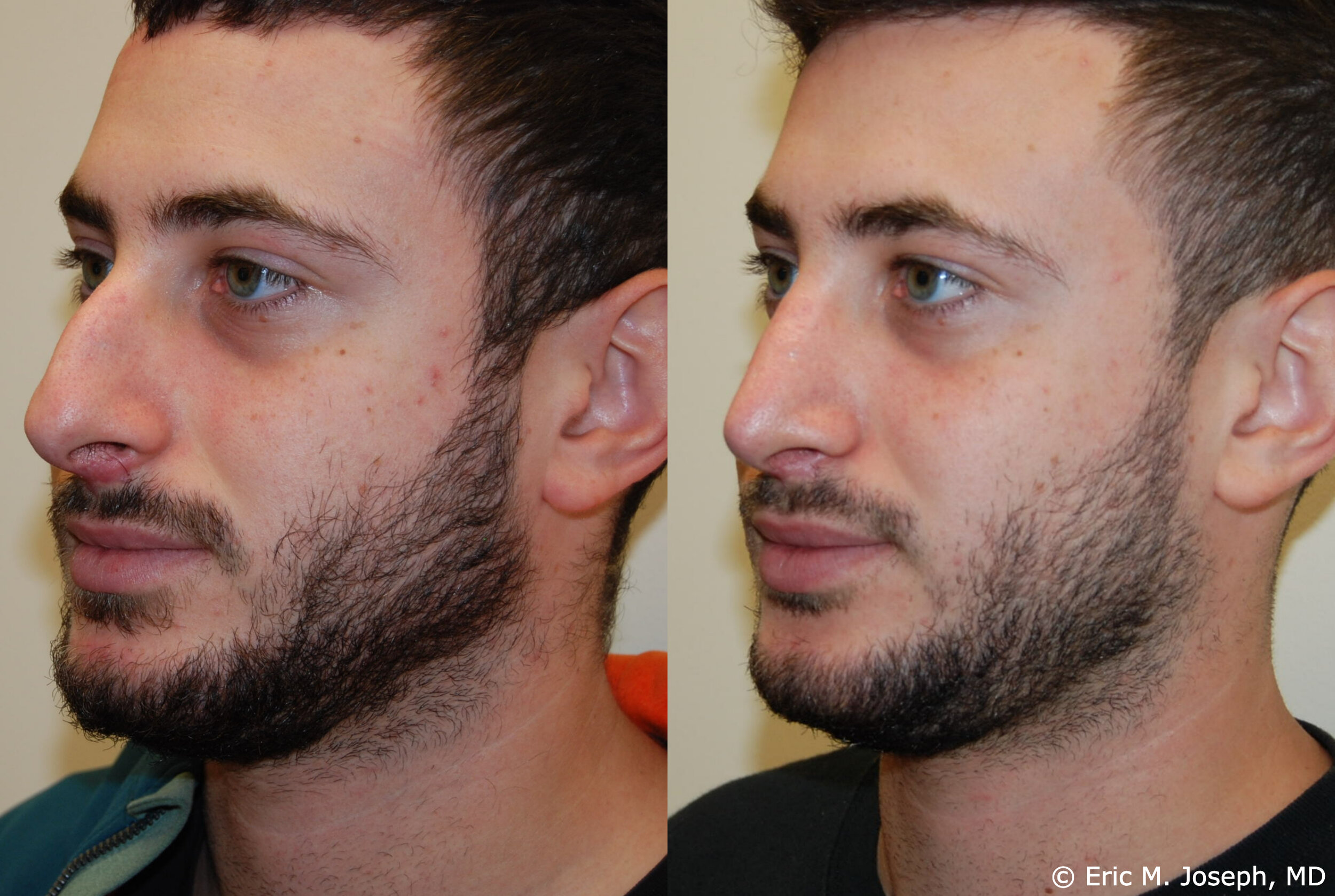
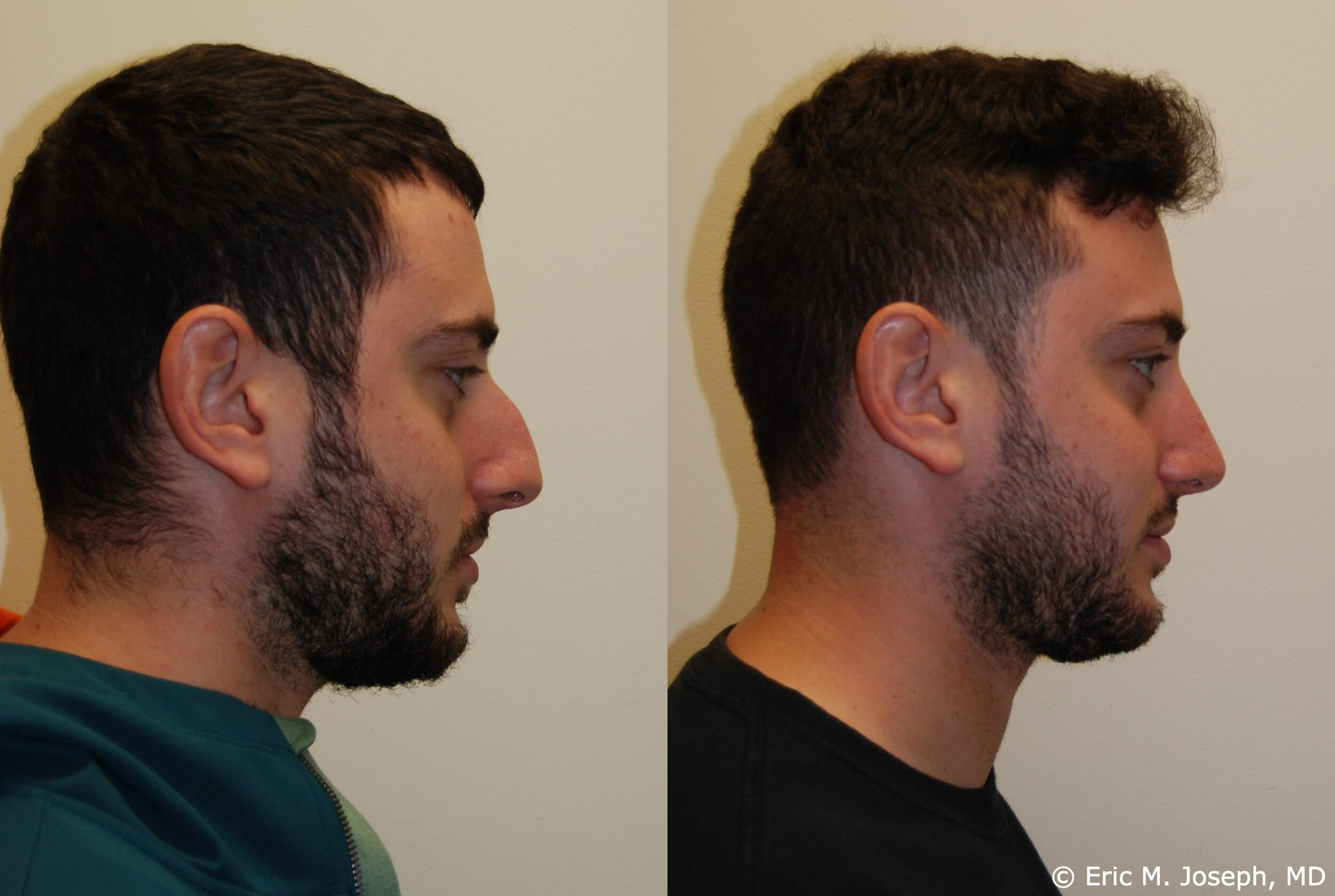

Rhinoplasty #182
These photos of our handsome twenty five year old patient were taken 7 months after rhinoplasty surgery. He had a combined functional and cosmetic nasal procedure since he didn't like the way his nose looked, and he was also having difficulty breathing through his nose. He had previous nasal trauma several times that left him with a crooked nasal appearance, and a deviated nasal septum. Additionally, he had a history of chronic nasal allergy that led to enlargement of his turbinates, so turbinate reduction was performed at the time of his rhinoplasty. His functional and cosmetic rhinoplasty also consisted of septoplasty, tip-plasty, alarplasty (nostril narrowing), hump removal, osteotomies and placement of a right-sided cartilage spreader graft. His spreader graft was carved from his septal cartilage, and was used to provide a straighter nasal appearance, and to open a narrowed internal nasal valve for better breathing.
Turbinates are organs in your nose, about the size of your pinky, that filter and humidify the air you breathe. If you are exposed to things in the air you may be allergic to, it can cause your turbinates to enlarge over time, even if you use nasal saline, nasal steroids, and antihistamines. In our practice, we reduce the turbinates, if necessary, with a bipolar electrosurgical device called a Dennis probe. Turbinate reduction takes under ten minutes to perform, and does not increase pain after rhinoplasty, When turbinate reduction is combined with rhinoplasty, there may be an increased likelihood of a postoperative nose bleed, and temporary nasal crusting is common for up to one month after your procedure. Turbinate reduction, however, may lead to markedly improved nasal breathing when someone has chronic turbinate enlargement from chronic nasal allergy.